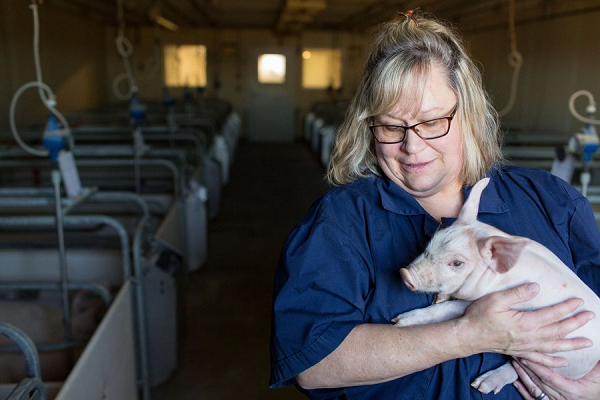Dianne DeWitt of the University of Minnesota veterinary college is advising swine breeders who take animals to shows take precautions against bringing home diseases.
Her advice could apply to all species taken to exhibitions.
Her recommendations include:
- Temporarily isolate all incoming pigs separate from the animals already on the farm.
- The ultimate isolation situation would be a quarantine facility that is separate or remote from the existing herd.
- Recommended isolation times range from 14-30 days to ensure that the new or returning pigs can be watched for signs of disease.
- When conducting daily chores, take care of the isolated pigs last; use the isolation period as a time to observe and test for diseases and to vaccinate and acclimate new animals.
- Clean, disinfect and dry facilities and equipment
- Thorough cleaning requires removal of all bedding and manure, washing with hot water (preferred) and an appropriate detergent formulated for livestock use
- Facilities should be cleaned and disinfected between populations of pigs.
- All equipment that touches pigs should be cleaned and disinfected after use. This includes sorting boards, floor mats, and any show equipment that has been used.
- Disinfectants should be used only after cleaning and applied according to label instructions
- Facilities and equipment should be allowed to dry after cleaning and disinfection. Drying can occur either by direct sunlight, passage of time, or use of an additional heat source.
- Control movement of wildlife, rodents, pet, and other pests
- Keep the family dogs and cats away from the pigs; it’s easy for a free-running pet to bring disease organisms into the barn. Do not rely on cats for rodent control.
- Exclude wildlife from the barn area. Raccoons, opossums, skunks and groundhogs are all attracted to spilled feed, manure and mortalities.
- Control rodents with a systematic and regularly serviced bait program.
- Use fencing, bird netting or other materials to keep birds and other pests out of the barn.
- Dispose of mortalities in a timely and complete manner
- Compost mortalities if possible.
- Use a rendering service if composting isn’t available. Remember that rendering trucks can transmit disease, so establish a way to keep the truck off the farm premises.
